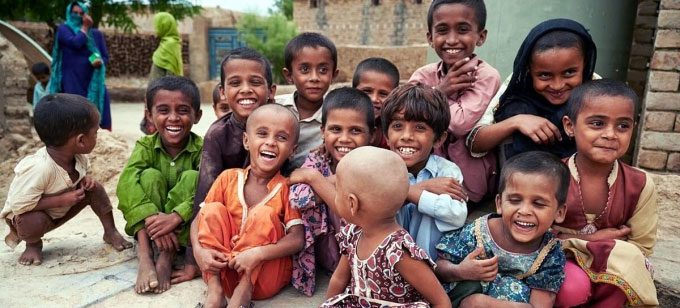A baby girl was born at 1:29 AM on November 15 in Manila, Philippines, and is recognized as the world’s 8 billionth person.
“This was a normal delivery,” said Dr. Romeo Bituin, the medical director of Jose Fabella Memorial Hospital, where the baby girl was born, according to Manila Bulletin. The baby girl has been named Venice Mabansag.
The executive director of the Philippine Commission on Population and Development (POPCOM), part of the Philippine Statistics Authority (PSA), Ms. Lyneth Therese Monsalve, hopes that baby Venice will “be a symbol of future development.”
The baby’s mother, Ms. Maria Margarette Villorente, expressed her joy in having her child recognized as “the world’s 8 billionth baby”, stating that “this is a blessing for our family.”

A baby girl born at Jose Fabella Memorial Hospital in Manila, Philippines, recognized as the world’s 8 billionth person on November 15. (Photo: Manila Bulletin).
On the same morning, the United Nations Population Fund (UNFPA) also reported that the world population has reached 8 billion, with estimates suggesting it could reach 9 billion by 2037. According to UNFPA, this unprecedented growth is attributed to increased human longevity due to advancements in public health, nutrition, personal hygiene, and medicine. It is also a result of sustained high birth rates in many countries.
Ms. Naomi Kitahara, UNFPA Representative in Vietnam, stated that despite the many challenges ahead, behind the figure of 8 billion people and reaching this significant milestone is a story of success. “We have reduced poverty rates and made remarkable progress in social issues. We are experiencing the largest population ever, partly due to increased life expectancy, while maternal and infant mortality rates have decreased,” she said.
Humanity is facing serious challenges that could affect many generations, such as climate change, conflict, and COVID-19. These issues are having a significant impact on the most vulnerable and marginalized populations.
“Millions of people are still living in poverty and malnutrition, lacking access to healthcare and social protection services, and unable to complete quality basic education,” Ms. Naomi Kitahara shared, adding that women around the world still do not have the basic right to make decisions about their bodies and futures.
The United Nations predicts that the world population will take an additional 15 years, until 2037, to reach 9 billion people. This indicates that the overall global population growth rate is slowing down. Previously, the population increased from 7 billion to 8 billion in just 12 years. The global population growth rate fell below 1% in 2020. The population may peak in the 2080s at around 10.4 billion and remain at that level until 2100.
The 2022 World Population Prospects report shows a significant decline in birth rates in many countries over recent decades. Currently, two-thirds of the global population lives in a country or territory with a birth rate below 2.1 births per woman, nearly the level needed to achieve zero growth over a long period among populations with low mortality rates. The populations of 61 countries and territories are projected to decline by 1% or more from 2022 to 2050 due to low birth rates and high emigration rates.

Children in Shaheed Benazirabad District, Sindh Province, Pakistan. (Photo: UN).
Low-income countries often have the highest birth rates. Therefore, global population growth over time will be concentrated in the poorest countries, mostly in the sub-Saharan Africa region. In these countries, rapid and prolonged population growth could hinder the Sustainable Development Goals (SDGs) – the best pathway for the world towards a sustainable and healthy future.
Globally, the average life expectancy reached 72.8 years in 2019, an increase of nearly 9 years since 1990. The global average life expectancy is expected to rise to about 77.2 years by 2050 due to continued declines in mortality rates.
Population growth is causing economic development to have a greater impact on the environment. Per capita income is also expected to rise. This is a major driver of unsustainable production and consumption patterns. However, areas with the highest material resource consumption and greenhouse gas emissions are often high-income countries, rather than rapidly growing populations.





















































